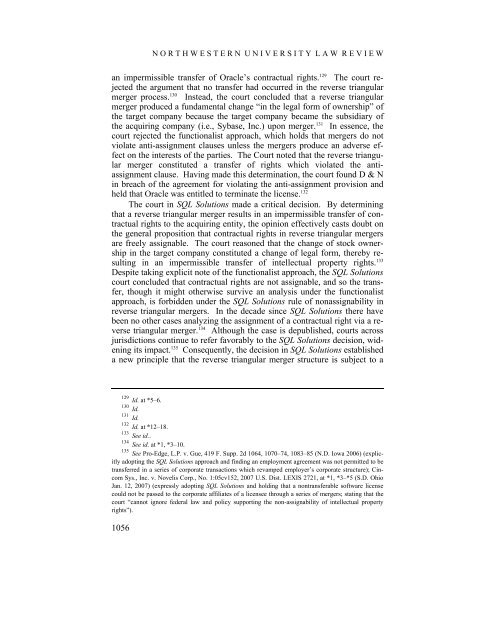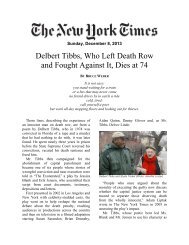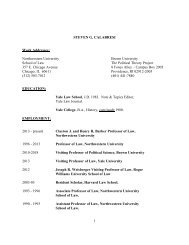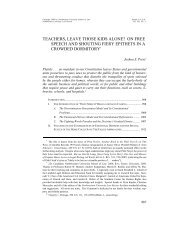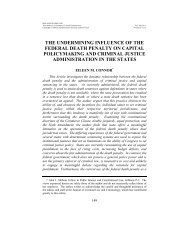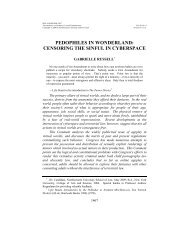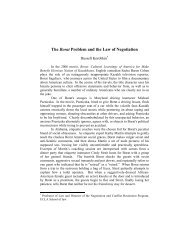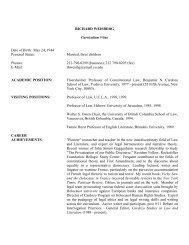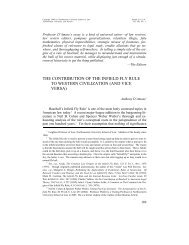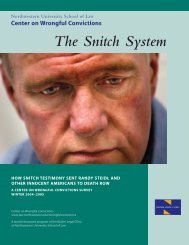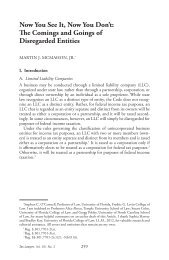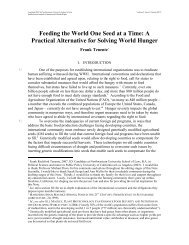The Reverse Triangular Merger Loophole and Enforcing Anti
The Reverse Triangular Merger Loophole and Enforcing Anti
The Reverse Triangular Merger Loophole and Enforcing Anti
You also want an ePaper? Increase the reach of your titles
YUMPU automatically turns print PDFs into web optimized ePapers that Google loves.
1056<br />
N O R T H W E S T E R N U N I V E R S I T Y L A W R E V I E W<br />
an impermissible transfer of Oracle’s contractual rights. 129 <strong>The</strong> court rejected<br />
the argument that no transfer had occurred in the reverse triangular<br />
merger process. 130 Instead, the court concluded that a reverse triangular<br />
merger produced a fundamental change “in the legal form of ownership” of<br />
the target company because the target company became the subsidiary of<br />
the acquiring company (i.e., Sybase, Inc.) upon merger. 131 In essence, the<br />
court rejected the functionalist approach, which holds that mergers do not<br />
violate anti-assignment clauses unless the mergers produce an adverse effect<br />
on the interests of the parties. <strong>The</strong> Court noted that the reverse triangular<br />
merger constituted a transfer of rights which violated the antiassignment<br />
clause. Having made this determination, the court found D & N<br />
in breach of the agreement for violating the anti-assignment provision <strong>and</strong><br />
held that Oracle was entitled to terminate the license. 132<br />
<strong>The</strong> court in SQL Solutions made a critical decision. By determining<br />
that a reverse triangular merger results in an impermissible transfer of contractual<br />
rights to the acquiring entity, the opinion effectively casts doubt on<br />
the general proposition that contractual rights in reverse triangular mergers<br />
are freely assignable. <strong>The</strong> court reasoned that the change of stock ownership<br />
in the target company constituted a change of legal form, thereby resulting<br />
in an impermissible transfer of intellectual property rights. 133<br />
Despite taking explicit note of the functionalist approach, the SQL Solutions<br />
court concluded that contractual rights are not assignable, <strong>and</strong> so the transfer,<br />
though it might otherwise survive an analysis under the functionalist<br />
approach, is forbidden under the SQL Solutions rule of nonassignability in<br />
reverse triangular mergers. In the decade since SQL Solutions there have<br />
been no other cases analyzing the assignment of a contractual right via a reverse<br />
triangular merger. 134 Although the case is depublished, courts across<br />
jurisdictions continue to refer favorably to the SQL Solutions decision, widening<br />
its impact. 135 Consequently, the decision in SQL Solutions established<br />
a new principle that the reverse triangular merger structure is subject to a<br />
129<br />
Id. at *5–6.<br />
130<br />
Id.<br />
131<br />
Id.<br />
132<br />
Id. at *12–18.<br />
133<br />
See id..<br />
134<br />
See id. at *1, *3–10.<br />
135<br />
See Pro-Edge, L.P. v. Gue, 419 F. Supp. 2d 1064, 1070–74, 1083–85 (N.D. Iowa 2006) (explicitly<br />
adopting the SQL Solutions approach <strong>and</strong> finding an employment agreement was not permitted to be<br />
transferred in a series of corporate transactions which revamped employer’s corporate structure); Cincom<br />
Sys., Inc. v. Novelis Corp., No. 1:05cv152, 2007 U.S. Dist. LEXIS 2721, at *1, *3–*5 (S.D. Ohio<br />
Jan. 12, 2007) (expressly adopting SQL Solutions <strong>and</strong> holding that a nontransferable software license<br />
could not be passed to the corporate affiliates of a licensee through a series of mergers; stating that the<br />
court “cannot ignore federal law <strong>and</strong> policy supporting the non-assignability of intellectual property<br />
rights”).


